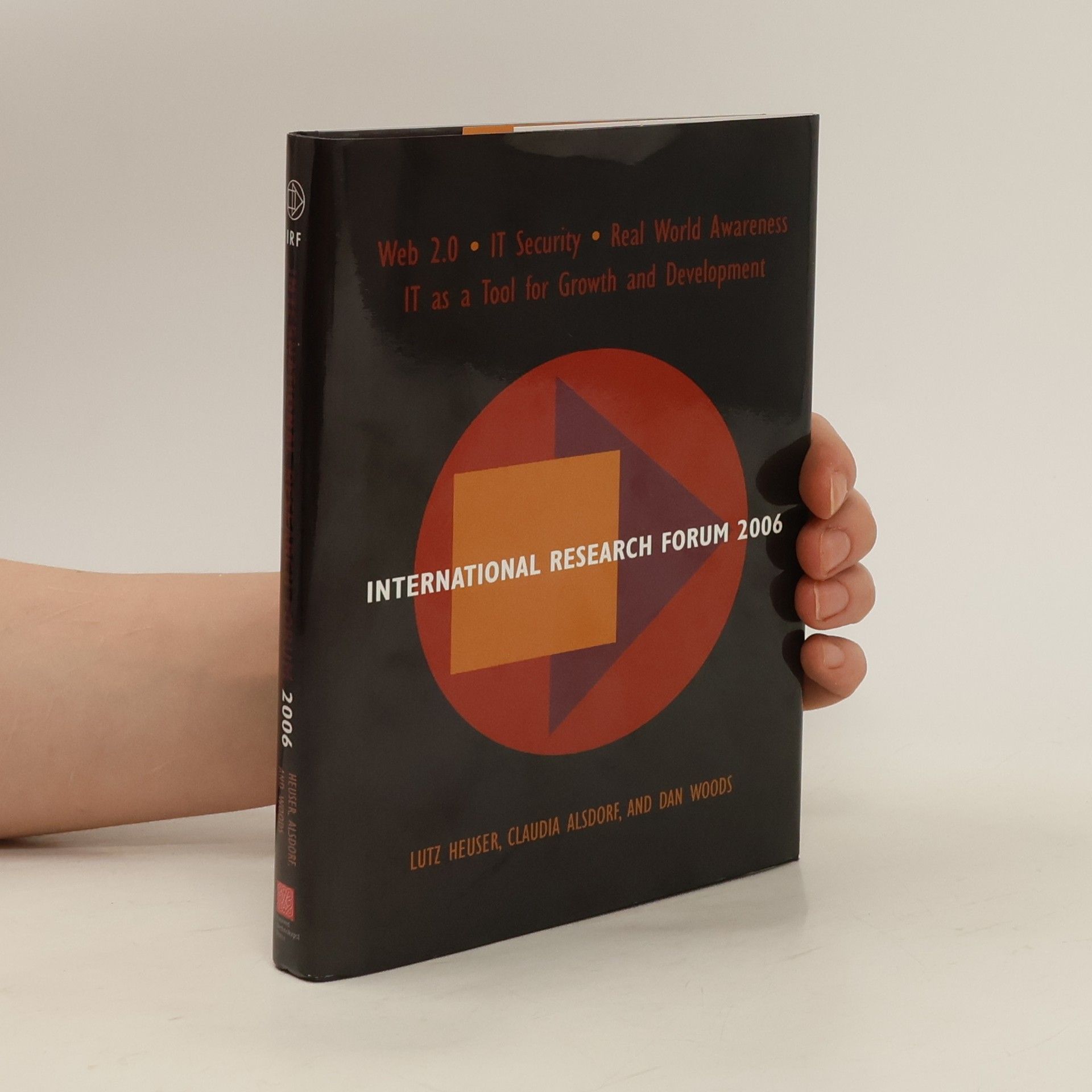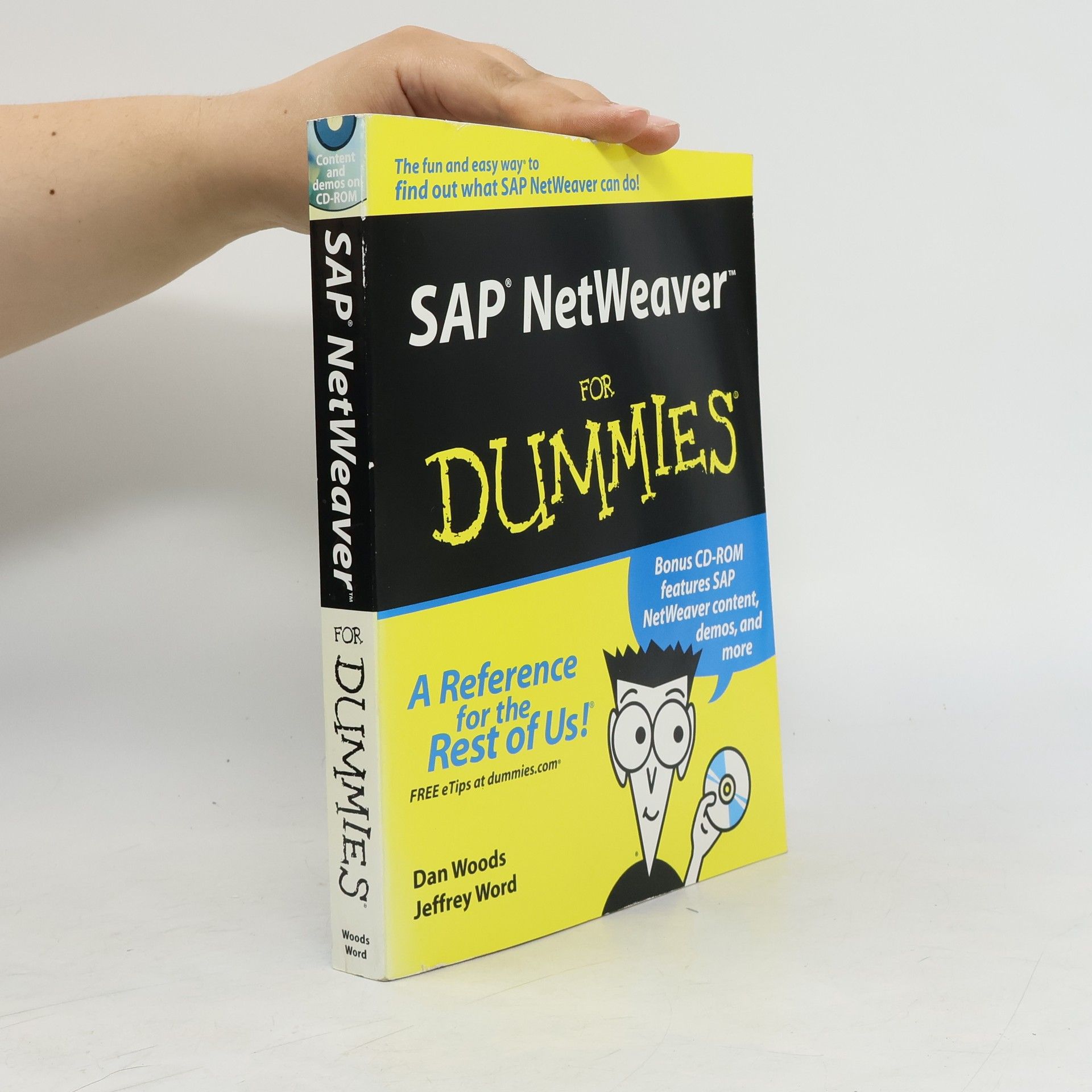Imagine that it’s the 1950s, and you are in charge of developing the U. S. interstate system. There are countless roads already in use. The system can go in numerous different directions. Where do you begin? Starting to transform your business with SAP NetWeaver is that daunting. NetWeaver is both an application platform and an integration platform. It integrates your current IT systems to enable portals, collaboration, data management, and development environments. To grasp the complexities and possibilities of SAP ASAP, dig in with SAP NetWeaver For Dummies and Written by Dan Woods, former CTO of The Street.com and CapitalThinking, and Jeffrey Word, the Director of Technology Strategy for SAP, this guide features real-life stories from businesses and examples of typical uses to help you cut through the complexities and get up and running. You choose the applications that have the most potential to benefit your company’s operations and bottom line. SAP NetWeaver For Dummies even gives you recommendations for rolling it out and suggests practical ways to get started and get quick returns on your SAP investment. Then you’re going full-speed ahead on the road to success!
Dan Woods Livres





Enterprise SOA. Designing IT for Business Innovation
- 452pages
- 16 heures de lecture
Information Technology professionals can use this book to move beyond the excitement of web services and service oriented architecture (SOA) and begin the process of finding actionable ideas to innovate and create business value. In Enterprise SOA: Designing IT for Business Innovation, SAP's blueprint for putting SOA to work is analyzed from top to bottom. In addition to design, development, and architecture, vital contextual issues such as governance, security, change management, and culture are also explored. This comprehensive perspective reduces risk as IT departments implement ESA, a sound, flexible architecture for adapting business processes in response to changing market conditions. This book answers the following questions: What forces created the need for Enterprise Services Architecture? How does ESA enable business process innovation? How is model-driven development used at all levels of design, configuration, and deployment? How do all the layers of technology that support ESA work together? How will composite applications extend business process automation? How does ESA create new models for IT governance? How can companies manage disruptive change? How can enterprise services be discovered and designed? How will the process of adapting applications be simplified? Based on extensive research with experts from the German software company SAP, this definitive book is ideal for architects, developers, and other IT professionals who want to understand the technology and business relevance of ESA in a detailed way--especially those who want to move on the technology now, rather than in the next year or two.
Mashup Corporations
The End of Business as Usual - 2nd Edition with New Chapters on Overcoming Barriers and Changing the Game
- 196pages
- 7 heures de lecture
Mashup The End of Business As Usual tells the tale of Vorpal Inc., a company that pioneers the implementation of service-oriented architecture to transform its business model. CEO Jane Moneymaker believes in marketing manager Hugo Wunderkind's idea of creating a new market using non-traditional methods based on mashups, but struggles to achieve this vision. The story illustrates what it takes to achieve cultural change, overturning established business and IT structures. By embracing a service-oriented approach Moneymaker makes Vorpal faster, flexible and more responsive, bringing an end to business as usual. Mashup Corporations takes a unique approach to communicating its message. From the first page, readers will find themselves in a story populated with people who interact in ways that will ring true to others who have struggled to make technology work in an organization, large or small. The conflicts that naturally arise between CEOs, CIOs, and line of business managers illustrate the important issues at stake within Vorpal and most other companies. As the leaders of Vorpal find their way out of their predicament, rules about how mashups and service orientation can be properly applied emerge. These rules, which may be the most enduring contribution of the book, are illustrated and analyzed using real-life examples. Introduction to the Second Edition Since the publication of the first edition of Mashup The End of Business as Usual in October 2006, the adoption of business models related to mashups, Web 2.0, and service oriented architecture (SOA) has continued to accelerate. New applications, new products, new techniques, and, most importantly, new ideas are blooming. The authors are pleased to report that the first edition of the book has met with a warm reception. Forrester, the analyst firm, recommended it as one of the two most entertaining and informative books on the subject. The book has been adopted by several different companies as an educational tool. Capgemini created a live-action play based on characters in the book that was presented at Oracle Open World during a keynote address by Andy Mulholland. (See //www. oracle.com/openworld/attendees/progra... to view the video, which appears about half way down the page. A condensed version is also available on www.capgemini.com.) Sales of the book have been brisk and so have suggestions for improvements. Based on this success, the authors decided it was time for a second edition. What We Added You will find two additional chapters in this second "Chapter 7: Overcoming Barriers" and "Chapter 9: Changing the Game". The idea for chapter 7 came out of discussions between the authors and Avrami Tzur, VP of SOA at Hewlett Packard. Avrami pointed out that even though the story of the book covered the process of adopting mashups and SOA from top to bottom, a different sort of struggle emerged as the early adopters in a company attempted to convince the rest of the company to come along. Based on Avrami's experience, we added a chapter that covers the struggle to overcome barriers to adoption of mashups and SOA. Anyone who knows Andy Mulholland is well aware of his prodigious output in the form of blogs, white papers, and of course, books. Andy's analysis of how to think about mashups, SOA, and Web 2.0 in an integrated, strategic fashion is contained in "Chapter 9: Changing the Game". As the body of experience and knowledge about mashups and SOA grows, we hope that others like Avrami approach us and add their experience. Only by harvesting such knowledge can we move this story forward and make the book even more effective in explaining the potential business value of mashups and SOA. In this way, our effort may become a successful instance of a blook, content that combines aspects of a blog and a book.
International Research Forum 2006
- 192pages
- 7 heures de lecture
In March 2006, SAP Research convened a daylong meeting of several dozen thinkers and entrepreneurs in Darmstadt, Germany to discuss the future of information and communication technologies (ICT). The first annual International Research Forum was an earnest effort to grapple with the challenges and opportunities posed by these technologies. The forum's findings-and the accompanying conversation that was by turns provocative, erudite, and even dizzying-have been captured between these covers. International Research Forum 2006 explores how Web 2.0 and Real World Awareness technologies point to a fundamentally different model of ICT, the security challenges these technologies pose, and whether they can be a lever for growth on a national or even global scale.
SAP NetWeaver
Your One-Stop Guide to SAP® NetWeaver™ Integration/Application Platform (With CD)
- 436pages
- 16 heures de lecture